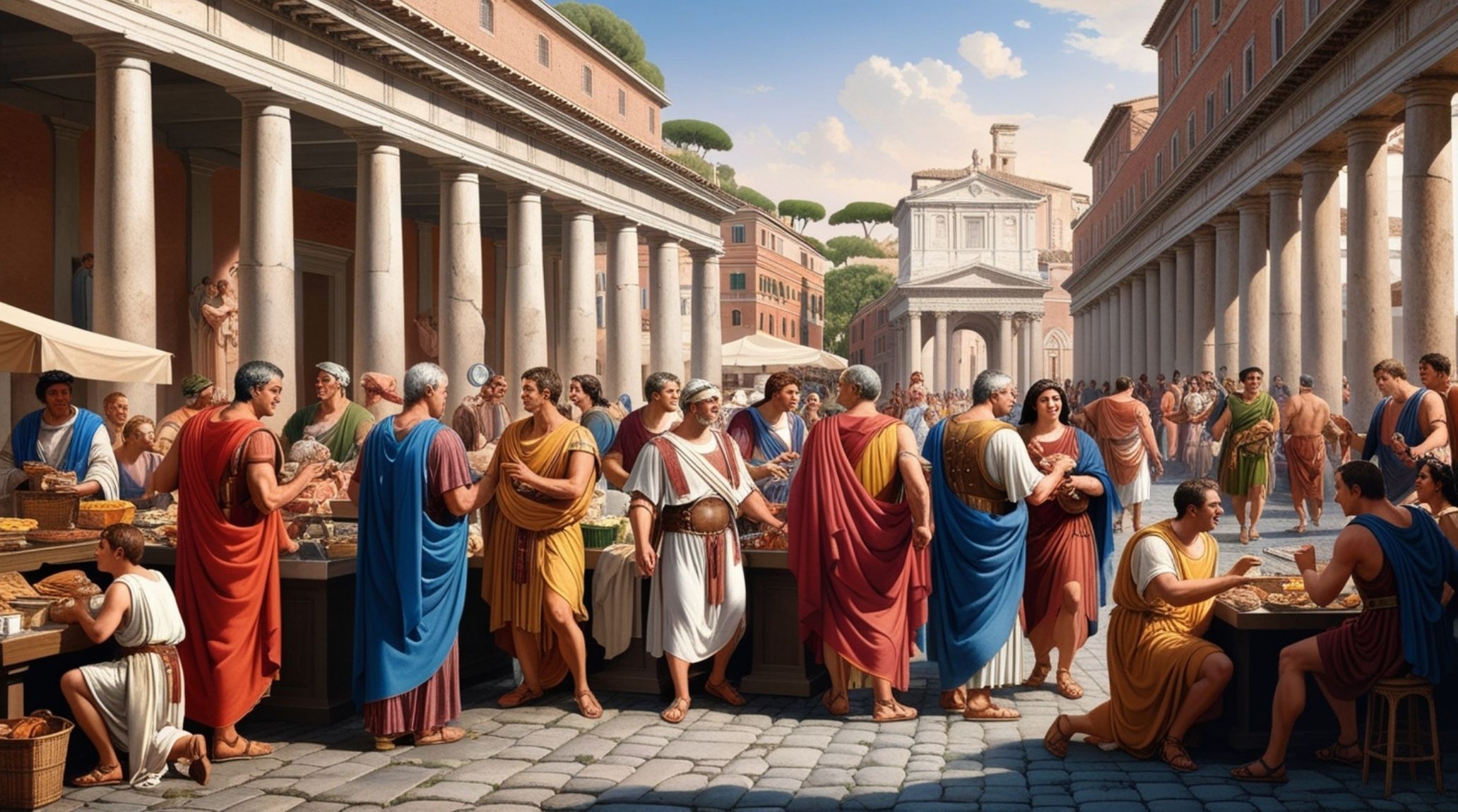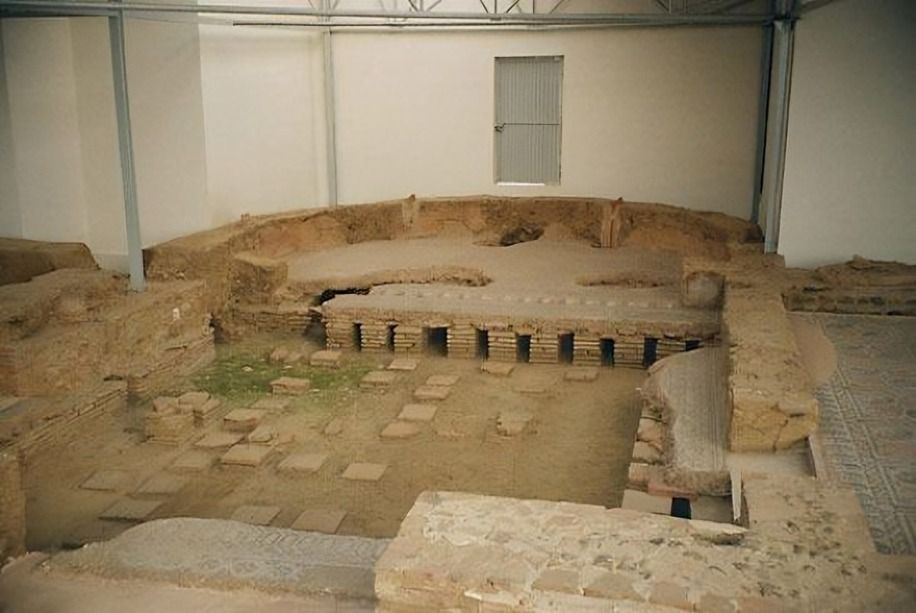
“
Step back in time and immerse yourself in the vibrant world of Ancient Rome with our exploration of Daily Life in Ancient Rome. In this blog , we will delve into the facts about Daily Life in Ancient Rome, examining how daily routines, social interactions, and cultural practices intertwined to form a unique way of life. 1
1
”

Most common Romans lived in insulae, which were multi-story apartment buildings. These buildings were often cramped and lacked modern amenities, with the lower floors being more desirable due to their proximity to street level.
The Roman diet included bread, olives, cheese, and a variety of fruits and vegetables. Wealthier Romans enjoyed more elaborate meals with meats, fish, and exotic spices, often hosted in their triclinium, or dining room. 1
The Forum was the center of public life in Rome, where citizens gathered for political, commercial, and social activities. It was surrounded by important buildings like the Senate House and various temples. 2
Education for Roman children began at home, with primary education provided by tutors or in small schools. Wealthy families often sent their children to private tutors for advanced studies in rhetoric and philosophy. 3
Roman men typically wore a tunic and, for formal occasions, a toga. The toga was a symbol of Roman citizenship and varied in style and color depending on the wearer’s social status and the occasion. 4
Wealthier Romans lived in luxurious villas with elaborate gardens and multiple rooms. These villas often featured peristyles (courtyards) and were designed to provide comfort and showcase wealth. 5
Religion was integral to daily life, with numerous gods and goddesses worshiped. Rituals and sacrifices were performed to gain favor and ensure good fortune, and religious festivals were widely celebrated. 6
The Romans built an extensive network of roads, which facilitated trade and military movement across the empire. These roads were constructed with layers of materials for durability and had milestones for distance measurement. 7
Romans enjoyed various forms of entertainment, including chariot racing in the Circus Maximus and gladiatorial combat in the Colosseum. These events were often grand spectacles and could attract large crowds. 8

Wealthy Romans used a hypocaust system to heat their homes. This system circulated hot air beneath the floors and through the walls, providing an effective method of heating in the colder months.
The Roman government conducted regular censuses to count the population and assess taxes. This practice ensured accurate records for administrative purposes and was crucial for military and economic planning. 9
Slavery was a common aspect of Roman society, with slaves performing a variety of roles, from household chores to labor in mines and farms. Slaves could sometimes earn their freedom through various means. 10
Public spectacles, including theatrical performances and mock naval battles, were popular in Rome. These events were often sponsored by wealthy individuals or the state as a way to gain public favor. 11
Roman law was highly developed and influential, with legal principles that continue to impact modern legal systems. The Twelve Tables were one of the earliest codifications of Roman laws and provided a basis for legal procedures. 12
Markets were essential for daily life in Rome, where citizens bought food, clothing, and other goods. The markets, or forum, were bustling centers of commerce and social interaction. 13
Romans used various modes of transportation, including horse-drawn carts and litters for the wealthy. The extensive road network facilitated travel across the empire, contributing to its cohesion and efficiency. 14
Roman society was patriarchal, with the paterfamilias (male head of the family) holding significant authority. Family life was centered around this figure, and social status was closely tied to family heritage. 15

Roman currency included coins made of bronze, silver, and gold. The use of standardized currency facilitated trade and economic stability across the vast Roman Empire.
Daily life involved a range of chores, from cooking and cleaning to farming and craftsmanship. Roman families often had slaves or servants to assist with these tasks, though many also performed them personally. 16
Public baths were a cornerstone of Roman social life. These baths, or thermae, featured hot, warm, and cold pools, along with exercise areas and spaces for socializing. They were not only for bathing but also for conducting business and meeting friends. 17


